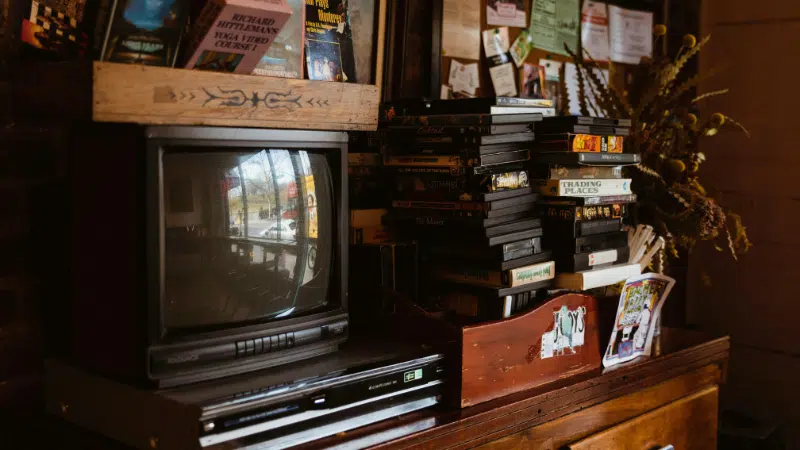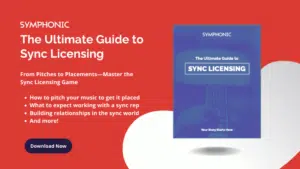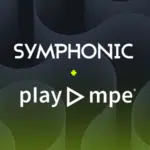For indie labels, sync licensing can be a game-changer. If you want to build momentum for new releases or tap into new revenue streams for your catalog, landing placements in TV, film, ads, and video games can help your artists build their audience and get paid. But just having great music isn’t enough. If your catalog isn’t streamlined for licensing, it’s difficult to compete with those who take the time to make sure all their ducks are in a row. To help you out, we’re breaking down precisely how to organize your catalog for licensing and what steps you can take to help your artists land some sync placements. Here’s everything you need to know…
Sync Licensing for Indie Labels: How to Prep Your Catalog the Right Way
What Makes a Track Sync-Friendly?
There’s a good chance your entire catalog is not going to be ideal for sync, and knowing which artists and songs will stand out for sync is not so easy.
The three things you need to consider are the overall vibe of the music, the lyrical content, and how complicated it is to license. Music supervisors need music that feels right for the scene, clears quickly, and is on budget. Your job is to put the right songs in front of them and make it as easy as possible for them to license. From a musical standpoint, a sync-friendly song will have:
- A defined emotion or vibe: Tracks that clearly convey a specific feeling, whether it’s tense, fun, nostalgic, romantic, or empowering.
- Universal and repetitive lyrics: Songs with relatable themes (like love, heartbreak, change, confidence, etc.) tend to be preferable over anything that’s highly narrative, vague, or explicit. The song is supposed to either support a scene or sell a product, so having a very clear meaning is key.
- Good energy, clean production: A catchy hook, dynamic, strong structure, and a great mix go a long way. There’s a fine line between lo-fi on purpose and just badly recorded music; supervisors can tell the difference.
- Instrumentals and clean versions: These are essential for most placements, especially in TV and advertising. Having instrumentals and cleans prepared sends a signal to the supervisors that you know what you’re doing.
As a label, you don’t have to chase trends or make cliche production music. In fact, supervisors love it when an artist has an authentic personality. You just need to make sure the best tracks in your catalog are easy to digest and license.
Now, how does one do that? Metadata, clean edits, instrumentals, and a little organization can make all the difference. Let’s break it down…
How To Properly Prep Your Catalog for Sync
Accurate & Complete Metadata
Your metadata communicates a lot of information about your music, but just as much about the sender. If it’s concise and detailed, it makes the supervisor feel at ease, like they’re dealing with a pro. If it’s incomplete or messy, then licensing your music feels like a huge headache. At the very minimum, a well-tagged song should include:
- Title
- Artist
- Album
- Release Year
- Writer(s)
- Lyrics
- Cover art
- Licensing contact info
- Detailed rights Information
If you want to go the extra mile, you can also add creative tags (genres, lyrical themes, etc) to the comments, BPM markings, PRO affiliations, and splits for each songwriter and contact info for any outside rights holders. If you’re sharing music digitally, embed this metadata directly into the MP3s. (Tools like DISCO or Byta can help with this.) A well-tagged track demonstrates your professionalism and helps your music be discoverable in whatever music library it’s saved in.
(Hint: Not super knowledgeable about PROs? We got you. 👀 Check out this post.)
Clean Versions & Instrumentals
Anything shown on broadcast television can’t use music with explicit lyrics. This includes any network TV shows and ads, but it also includes a variety of other content that may not want anything explicit for moral reasons. So if your music has an expletive or two, it’s a good idea to create a clean edit with the word fully removed. If the entire song is highly objectionable, it just might not be possible to make it work for broadcast.
Instrumental mixes are also important in a scene with heavy dialogue and are used in edits interchangeably with the vocal versions to provide space for the actors to speak. If you don’t have these mixes available, it leaves you at a big disadvantage if they’re required for use in a production. It’s also a hassle to create these after the fact, so get in the habit of bouncing these alternate versions while you’re in the mix phase and master them to match the main vocal versions.
Rights Ownership
Sync licensing requires mutual permission from both the owner of the master recording and the publishing rights. Masters are typically either independently owned by the recording artist or a label, while the publishing rights are either self-published by the songwriter or administered by their respective publishers. If there are multiple songwriters, publishers, and a label, getting a song cleared for sync can be a daunting task. And if you don’t have any idea who controls the publishing rights, or the writers are not responsive by email, you might lose out on a placement.
If a label controls 100% of both the master and publishing, this is referred to as being “one-stop”. It’s a huge advantage because it centralizes the rights to a single licensor and makes the process infinitely easier than coordinating several separate rights holders.
For productions that need to license a ton of music on a budget, one-stops are an absolute necessity. As a label, this doesn’t mean having to do a full publishing deal with your artists. If they’re independent, including the limited right to administer their publishing for sync in your deal is a smart move. Especially if the writers are always out on tour or just generally hard to pin down.
If your tracks aren’t one-stop, no problem. You just need to be clear about it. Supervisors are used to having to clear rights with multiple parties, but that doesn’t make it okay to send them on a wild goose chase to track down all the rights holders. That’s why it’s key to make sure you always include detailed rights information in the file metadata and know who needs to sign off for a license to be approved in a timely manner.
——
📚🧠 Feed yo’ brain…
Bodega Sync’s Guide to Leased Beats & Royalty-Free Samples
Smart Budgeting Basics for Indie Labels That Actually Work
Publishing 101 for Indie Labels: What You Need to Know to Do It Right
How to Support Artist Mental Health as a Label or Manager
——
DIY Pitching
Once your catalog is ready, you’ll need to put some playlists together to send out to music supervisors. An important thing to consider is that music supervisors will need a streaming link as well as an option to download. Without those downloadable files available, they can’t do their job. Platforms like DISCO and Chordal offer an all-in-one solution for this, along with a wide range of sync tools to help perfect your pitch, but Dropbox and Google Drive work just as well, too.
As a label, you’ll need to give supervisors an idea of what you have to offer in the hopes that you become a regular resource for them to reach out to when they have an active search. This could be a general sampler, thematic playlists, by genre, etc. Music supervisors receive tons of submissions every day, so making their job as easy as possible goes a long way.
A clear, focused pitch shows you understand their needs and respect their time. It helps them quickly find the right vibe or mood for their projects. The more you organize it for them, the less they have to guess what they’re being sent. A weekly email blast might also be a good option, just be sure to focus on new releases that might be appealing for sync. This gives supervisors a passive way to keep tabs on what types of music you have, as well as a weekly reminder that you’re there and an open thread they can quickly respond to with any current needs.
Special Agents
Navigating sync licensing can feel overwhelming, but luckily, you don’t have to do it alone! Many indie labels find success by partnering with sync agents or platforms that connect music with supervisors, brands, and ad agencies. With this approach, sync agents act as advocates for your catalog, pitching your music directly to buyers. These people have established relationships in the sync world and offer a deeper understanding of what supervisors and brands want.
Reps are often exclusive, but they’re typically also selective about what they represent. So long as the deal is exclusive on a release basis, you could work with several different ones for different parts of your catalog. This would also give you some valuable insight into how each rep works, how effective they are, and a diversification of where your music will be pitched. Other reps are not exclusive, but be wary of those who are willing to rep just anybody and have massive rosters. Quality assurance is important.
Our in-house sync rep agency, Bodega Sync, stands out because they are highly curated, offer a wide range of genres, meticulously prepare metadata, and aggregates rights for easy licensing. Unlike passive music libraries, Bodega actively pitches your tracks to a huge network of music supervisors based on the specific needs of their current projects, which can significantly increase your chances of success over cold outreach.
Since they work on a commission basis, there are also no upfront costs. At the end of the day, there are many options available to you. It’s always good to shop around for the right sync agency that’s best for your specific needs.
When it comes to choosing the right partner, be sure to keep these points in mind:
- Look for agencies focused on independent artists with flexible, transparent agreements.
- Make sure the company has a proven track record of getting placements for artists that resemble your catalog.
- Focus on agencies that work on a commission basis, so they have a strong incentive to produce results.
- Avoid companies with massive rosters, especially if they have tons of artists exactly like you. You’ll have to compete with them for placements.
If you’re interested in working with Bodega Sync, check out “What to Know Before Applying to Bodega Sync” and “What to Expect When Working with a Sync Rep” to learn more.
Libraries
Music libraries have really come a long way, and are no longer just a repository for random composer cues and corny production music. It’s important to understand that they are generally designed to be passive, relying on the vast quantity of music they have and the ability to accurately search via tags rather than having someone proactively pitch. They’re also typically non-exclusive, giving you the ability to have your music included in many libraries at the same time. Supervisors who rely on music libraries are often working on productions that need a high volume of music on a shoestring budget. This might be a small ad agency, an unscripted television show, or just a small brand creating content online.
If you have a big catalog of commercially appealing one-stop music, it could add up to some real money if you do things right with a library. If this sounds good to you, Songtradr, Epidemic, Musicbed, and Artlist are some reputable companies to check out.
To wrap things up…
Landing sync placements is as much about how you pitch as it is about the music itself. If you really want to make the best impression with music supervisors, keep these simple tips in mind:
- Keep metadata and rights info as clear and accurate as possible.
- Whenever possible, tailor your message to the project or supervisor’s style to show you’ve done your homework on what they’re looking for.
- Follow up, but be respectful.
- Quick replies and professionalism make a lasting impression that could lead to repeat placements!
With the right preparation and perhaps some help from an agent, sync licensing can go from a foreign concept to an everyday success story for your label. Organization will set you free.
Good luck!
//
📝 Did you know we have a sync licensing guide you can download for FREE?
Landing a sync placement can be a game-changer for your music career. We’re talking movies, TV shows, ads, video games, the kind of exposure that not only builds your brand but pays you, too. But getting there takes more than just having great music. That’s where our ultimate guide to sync licensing comes in. Whether you’re totally new to the world of sync or looking to level up your strategy, this guide breaks it all down for you. Click the image below to download it for free…




